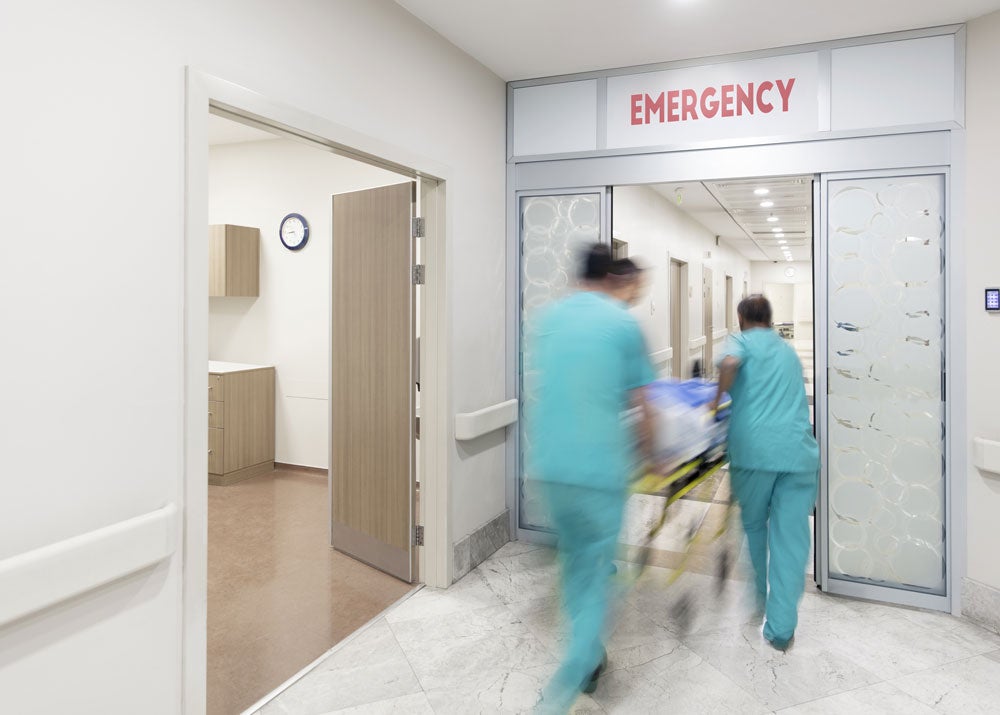As a devoted fan of the TV drama ER, and of course throughout my career as a scientist, I have always been intrigued by hospital Emergency Departments (ED). Each year, there are more than 130 million visits to Emergency Departments across the U.S. and the majority of ED patients spend less than 4 hours in the ED.1 It wasn’t until I visited several emergency departments, both as a patient and an observer, that I started to understand some of the unique infection control challenges that exist in these fast-paced, high risk environments.

- Waiting Areas as Hot Beds for Pathogen Transmission
Two-thirds of ED patients wait up to 1 hour before receiving care.1 Many patients are accompanied by friends and loved ones who may wait even longer in these shared spaces and can also serve as vectors to spread pathogens throughout a facility. Since the ED never closes, regular cleaning and disinfection of ED waiting areas and associated visitor restrooms can be a challenge. - Unknown Pathogen Risks
Determining the causative agent of an infection is not a quick process so infection control protocols in the ED must be ready for whatever comes through the ED doors — whether it is influenza virus, blood borne pathogens, antimicrobial resistant organisms or even parasites and insects such as scabies and bed bugs. When surveyed, 96% of ED nurses mentioned Clostridium difficile and MRSA as their top pathogens of concern.2 In addition to proper hand hygiene, cleaning and disinfection protocols must also be effective in killing these pathogens on surfaces before they can spread to other parts of the hospital. - All Hands on Deck Approach to Cleaning and Disinfection in Patient Care Areas
In many EDs, both clinical and environmental services team members are responsible for cleaning and disinfecting surfaces and equipment. This means that all team members need to understand their role in the cleaning and disinfection process and receive regular training regarding where, when and which products should be used in ED. - Quick Room Turnovers Required
If there is a waiting room full of patients, every minute counts to prepare an area for the next patient. In a recent survey, 62% of clinical team members in the ED mentioned that they are only able to wait one minute before an item they disinfected needs to be used again.2 Being able to compliantly disinfectant surfaces under time pressures requires fast-acting one-step cleaner disinfectants with short contact times.
Approximately 50% of all hospital admissions originate in the ED3, so a robust infection control protocol in the ED is a good first line of defense to protect patients and staff throughout the hospital. We recommend reviewing infection control protocols in the ED to ensure you are ready to handle the next emergency and the associated pathogens that come through your facility doors.
1 Rui P, Kang K. National Hospital Ambulatory Medical Care Survey: 2015 Emergency Department Summary Tables. [Internet]. [cited 2018 Nov 20]. Available from: https://www.cdc.gov/nchs/data/nhamcs/web_tables/2015_ed_web_tables.pdf
2 Clorox Custom Research, Acute Care Departmental Quantitative Analysis of Clinical Staff (n=139), March 2018
3 Gonzalez Morganti, K, et al. The Evolving Role of Emergency Departments in the United States. Santa Monica, CA: RAND Corporation, 2013. [Internet]. [cited 2018 Dec 7]. Available From: https://www.rand.org/pubs/research_reports/RR280.html






